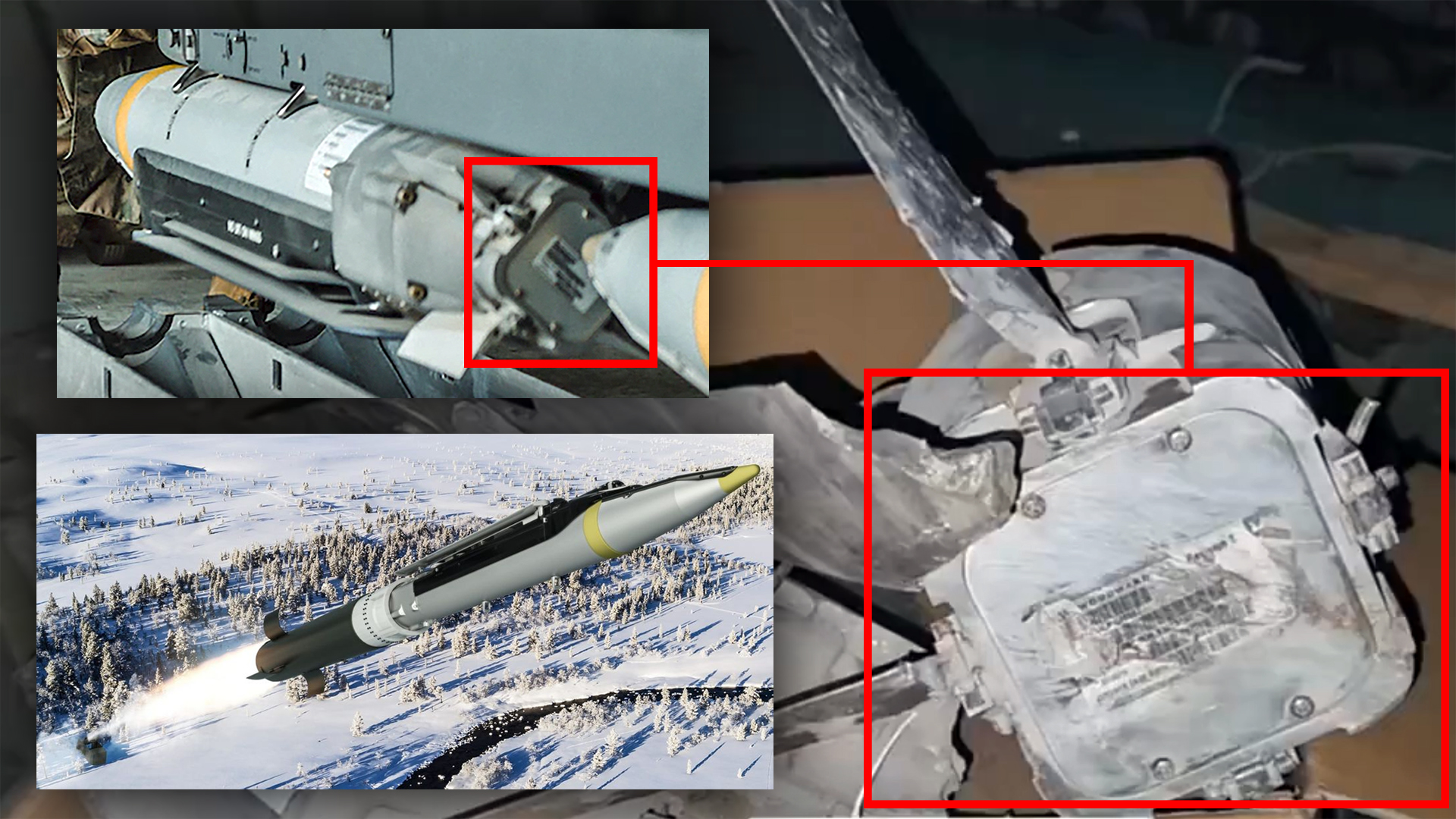The long-delayed Ground Launched Small Diameter Bomb (GLSDB), first promised to Ukraine in February 2023, has finally arrived on the battlefield. This marks the introduction of a powerful new standoff strike capability for Kyiv, something we have explored in depth in the past.
A brief video, apparently first posted today on the Telegram messaging app by a Russian military blogger, Ratnik2nd, shows the wreckage of an SDB. The footage shows fragments of the weapon, with the fins on the tail section being an exact match to SDB components.

Until now, there has been no confirmation from either Ukrainian or Russian military officials that the GLSDB has been used in combat. The only other possibility is that Ukraine is now air-launching SDBs, but we have no indication of that being the case, although it is possible.
The timing of GLSDB’s arrival is highly plausible, with reports in January of this year stating that the GLSDB could be in action with Ukrainian forces by the end of that same month. Subsequent reports claimed its entry into service was imminent.
Approval to transfer the new precision-guided weapon to Ukraine came after the U.S. Army oversaw its testing, according to reports at the time.
Able to strike targets at a distance of around 94 miles, the GLSDB offers nearly twice the range of the 50-mile Guided Multiple Launch Rocket System (GMLRS) munitions fired by the M142 High Mobility Artillery Rocket Systems, or HIMARS and the M270 Multiple Launch Rocket System (MLRS) provided to Ukraine.
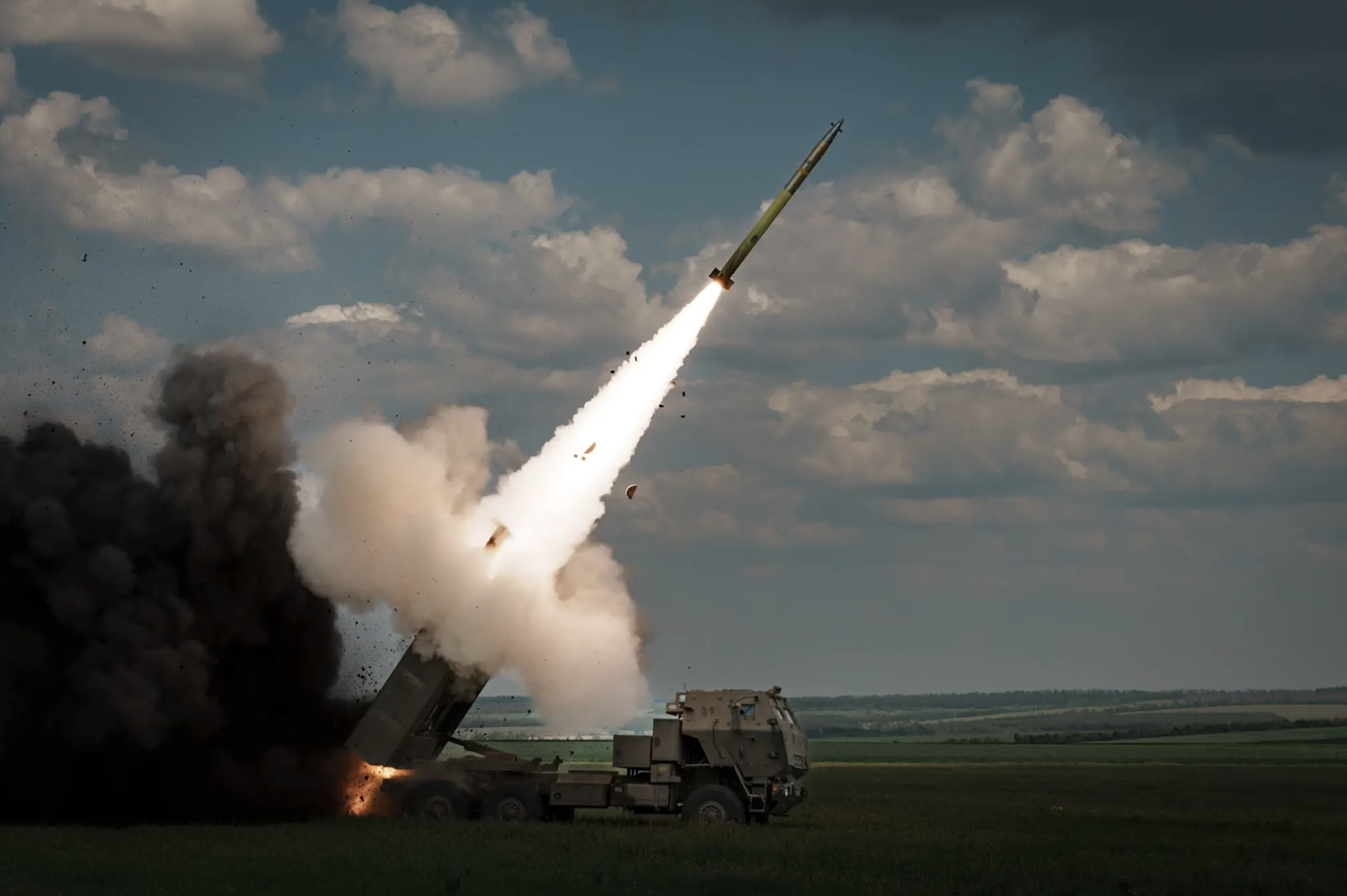
While we have explained the origins and capabilities of the GLSDB in the past, it’s worth noting that the weapon was developed by Boeing in partnership with Saab of Sweden. As far as is known, Ukraine is its first operator.
Each GLSDB weapon combines an air-launched 250-pound GBU-39/B SDB, a widely used weapon with a set of pop-out wings, with the rocket booster motor from a 227mm-caliber M26 artillery rocket that can also be fired by HIMARS and MLRS.

The GLSDB uses the M26 rocket motor for the initial boost/loft phase, after which it deploys its wings and continues unpowered, as a glide bomb. An inertial navigation system (INS) and embedded GPS guides it to its target. Saab claims that the GLSDB can hit a target with an accuracy of within three feet, while the use of INS means it can overcome the kinds of electronic warfare jamming that have become something of a trademark of the Ukrainian conflict while still maintaining some degree of accuracy.
While previously unproven in combat, the GLSDB does offer the significant advantage of widespread availability for the M26 rockets and the GBU-39/B SDB. As well as being major weapons for the United States they have also been exported to numerous allies. With the next U.S. arms package for Ukraine still in political deadlock in Washington, the option of sourcing components of the GLSDB from other nations is a very welcome one.
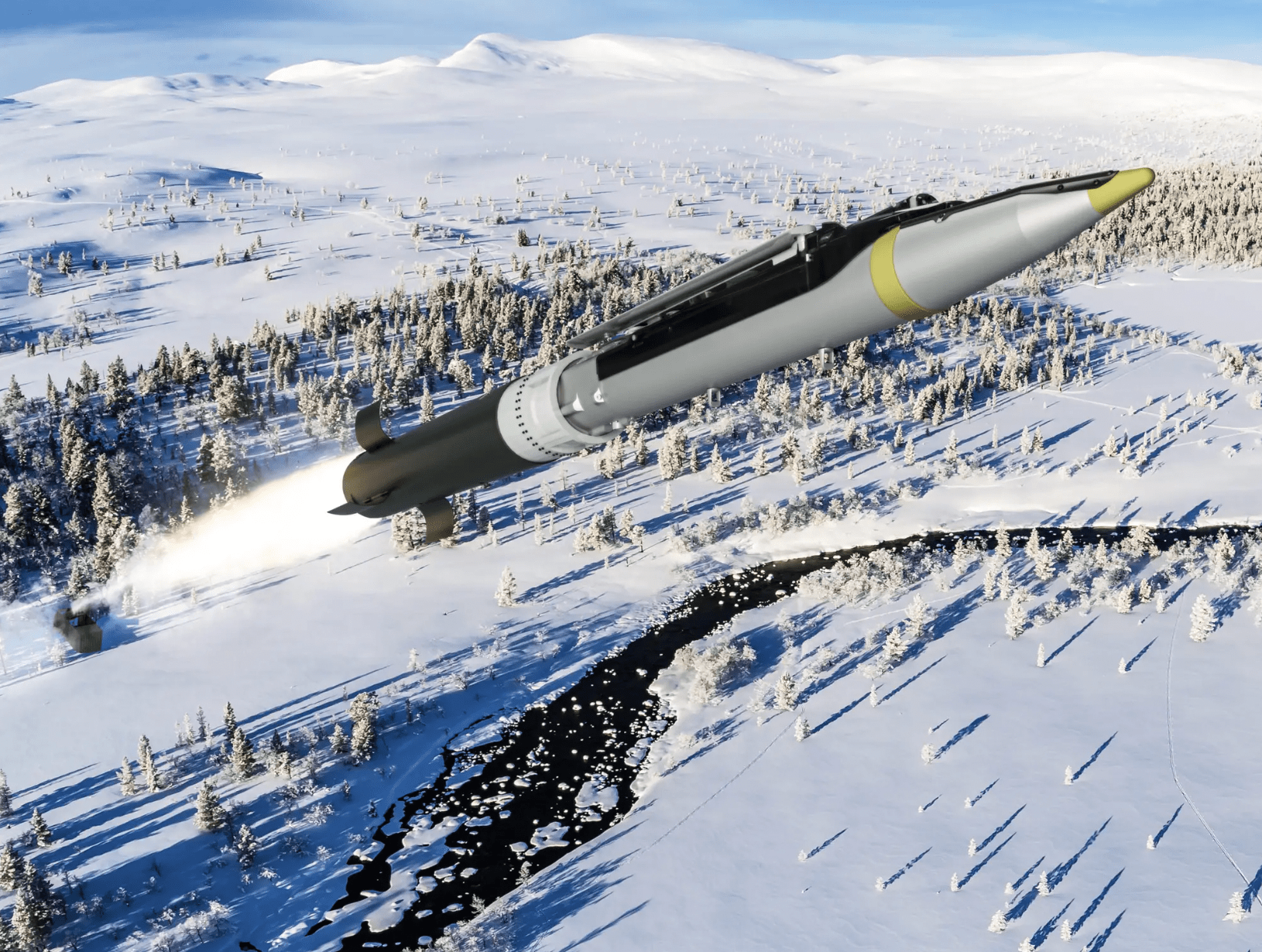
As well as the potential availability of constituent parts, the GLSDB also works out cheaper than a GMLRS round. While a single GBU-39/B costs around $50,000, a GMLRS round comes with a price tag of approximately $100,000.
However, the fact that the GLSDB was not in the U.S. inventory, or in an operational state anywhere else, contributed to the delays in getting these weapons to Ukraine.

While Washington signed a contract with Boeing in March 2023 for these weapons to be produced for Ukraine, it would have taken some time to spin up the manufacturing effort.
At one point, the first GLSDBs had been expected on the battlefield far earlier, but then it was made clear it wouldn’t be handed over to Ukraine until the fall of 2023. But then it was further delayed. Last November, the delivery date was pushed back to late December, according to Reuters.
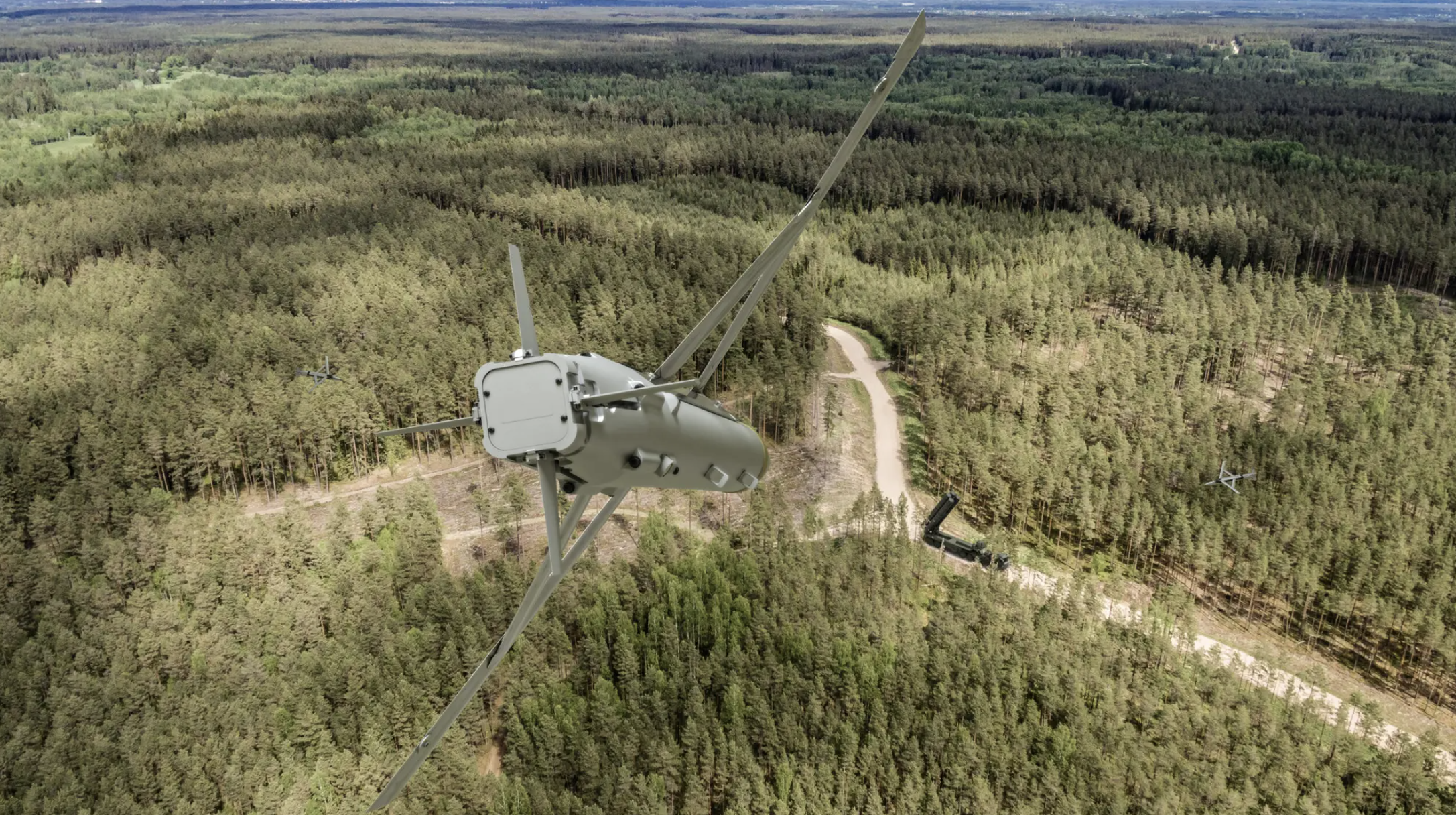
The gap between the late December 2023 handover and the arrival of the weapons on the battlefield was almost certainly the result of the need to still test the weapon before it could actually be delivered to the end-user.
“We anticipate providing this key capability in the early 2024 timeframe after successful verification,” a Pentagon spokesman told Reuters.

At this stage, we don’t know how many GLSDBs are headed to Ukraine, although it seems certain that they will be put to use alongside the other long-range strike weapons that have been provided by Western allies. In particular, two types of air-launched cruise missiles, the U.K.-supplied Storm Shadow and French-supplied SCALP EGs have been used to devastating effect against critical targets far beyond the front lines, especially in Russian-occupied Crimea.
Subsequently, the U.S.-provided Army Tactical Missile System short-range ballistic missile, or ATACMS, was supplied to Ukraine, with the weapon making a spectacular combat debut in a strike on an airfield near the Russian-occupied city of Berdyansk last October. Still, these were only transferred in very limited numbers.
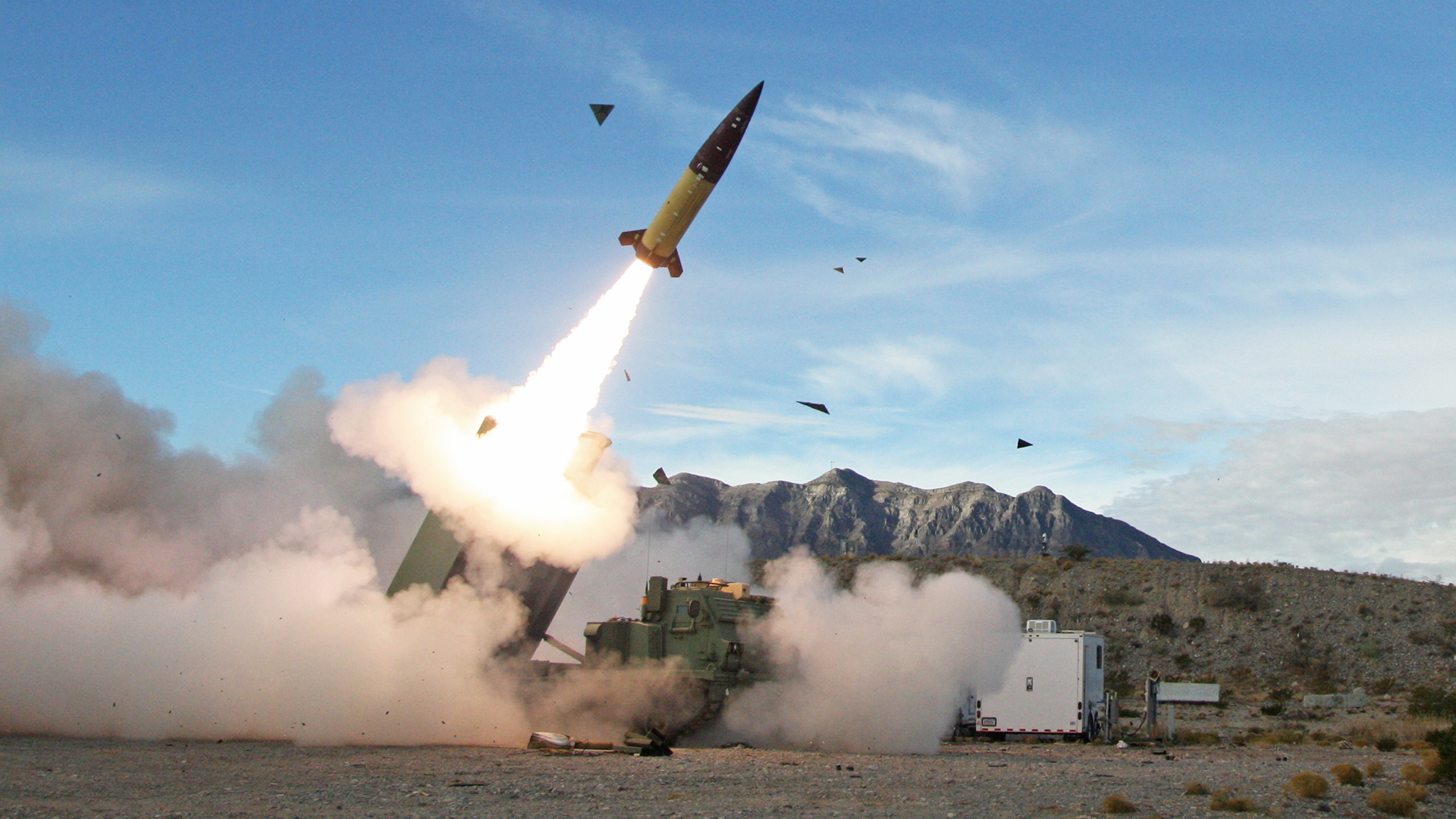
Compared to these weapons, the GLSDB lacks the long range of the air-launched cruise missiles, as well as the destructive effect. However, it is more flexible in that it can be launched from the ground, rather than requiring an aircraft to deliver it. Saab has also said that the GLSDB is “launchable from hidden or protected positions to avoid detection,” making it less vulnerable to the ever-present threat of counter-battery fire.
The initial versions of the ATACMS supplied to Ukraine have similar range to the GLSDB but considerably more destructive power, on account of their warhead and their terminal velocity.
As we have contended in the past, the GLSDB would seem to be tailor-made to fit a niche between the M31 guided rockets fired by HIMARS and longer-range cruise missiles.
Its reliable guidance system will likely be especially highly prized, while its warhead is considerably more powerful than the kind typically carried by long-range one-way attack drones. The penetrating capabilities of the GLSDB’s warhead could well see it being favored for tackling some fortified targets, such as hardened bunkers.

SDB can also fly a carefully planned route that avoids air defenses and can even attack a target from behind, making it harder to defend against. Its small size also adds to its survivability.
Hopefully, more details will emerge about the apparent first use of the GLSDB in Ukraine. However, with no shortage of Russian targets to go after, it likely won’t be long before we see more evidence of this intriguing new weapon being put to use by Ukrainian forces.
Contact the author: thomas@thewarzone.com
